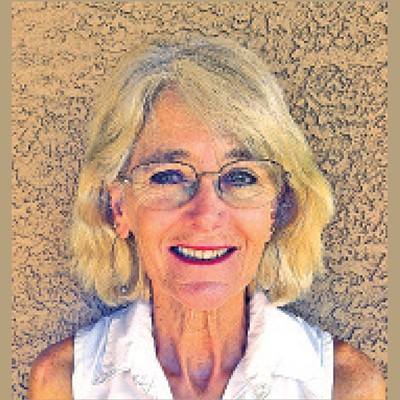On Aug. 20, Tom Danehy referenced Councilwoman's Regina Romero's invocation of the "creative class" as a justification for preserving the Warehouse District. At first, Danehy dismissed Romero's comment as "stupid," primarily because he didn't recall the term.
Danehy revisited the "stupid-ass term" and gave it a full thrashing on Sept. 10. As he noted, "creative class" was coined by Richard Florida, a professor currently at the University of Toronto, to describe people believed to be the drivers of growing regional economies. Danehy accuses Florida of "shoddy scholarship," but it is Danehy's commentary that is shoddy.
With all of this "creative class" banter flying about, it is time to clear things up.
First off, Florida's definition of the "creative class" is often caricaturized as being a collection of gays, indie musicians, and intellectual snobs lounging about drinking coffee and daydreaming. If you read closely and examine the indices Florida uses for analysis, you'll see that his actual definition includes entrepreneurs, academics, high-tech innovators and real estate redevelopers. This is the segment of society that is actively contributing to economic growth. Entrepreneurs create jobs. Academics demand quality education and spin off new companies from research. (In Tucson, you can look at Frost, a Gelato Shoppe and Ventana Medical Systems as examples.) High-tech innovators develop world-class centers of research—aerospace and optical-science sectors in Tucson account for thousands of quality jobs. And developers invest in depressed spaces to rebuild and capitalize on existing assets rather than soulless sprawl.
The bohemians and gays? They may contribute to the progressive politics that attract the creative class, but they are not necessarily a part of the creative class themselves. Successful regions are socially progressive; basic logic suggests that being more accepting of broader segments of society casts the widest net in the search for the best and brightest talent. Florida's indices, which he has painstakingly developed over the past two decades, generally confirm this logic. The books cited by Danehy are popular press stuff, but Florida's scholarly peer-reviewed articles are quite compelling. While some have taken stabs at Florida's methodology, nobody has really done much damage.
All Florida is really doing is serving up a prescription for regional economic development. Why is Tucson lagging behind comparable cities like Salt Lake City, Austin, Nashville, etc.? Let's start with a miserable downtown (although it's showing impressive signs of life), a substandard transportation/transit infrastructure and a woefully underfunded public education system. You won't hear about these shortcomings from local politicians, but you will hear these complaints from the scads of young engineers who rebuff Raytheon's recruitment drives every year.
The irony in the whole argument is—and this comes straight from Richard Florida's lecture to TREO a couple of years back—Tucson scores well in creative class indices. But politicians have not been able to capitalize on Tucson's vibe. We're spinning our wheels.
This brings me to Danehy's swipe at Romero. She is indeed the one who screwed up Richard Florida's argument in the first place, by carelessly justifying Warehouse District preservation as a benefit to the creative class without discussing the direct economic benefits. The creative class can set the table, but traditional business development brings the economic feast. Any councilmember who bows to neighborhood demands without considering how the plan fits business needs violates the harmony between progressive politics and business development that Florida envisions. Romero's comment suggests a rather careless interpretation of a theoretical pursuit, and the fallout is demonstrated by the depth of the rut in which downtown revitalization is mired.
It is worth noting that Danehy squandered an opportunity to contribute a trenchant critique of the applicability of the creative class theory. In practice, catering to economic elites, even if they wear trendy eyeglasses, should always be questioned. Florida has also been challenged on how the enactment of creative class strategies impact housing costs, education and the political empowerment of citizens not deemed creative. Nevertheless, there's a lot to like about creative class theory.
This commentary is not an assault on Romero or the Warehouse District. I am simply imploring downtown's stakeholders to take a holistic, long-term view toward sustainability—a concept that encompasses ecology, social equity and the economy. Capitalizing on the creative class—one of Tucson's strengths—is a bona fide strategy that could get us there.
Derek Eysenbach is a Ph.D. candidate in the School of Geography and Development at the University of Arizona, and can be found lurking downtown in search of beer and adventure.







